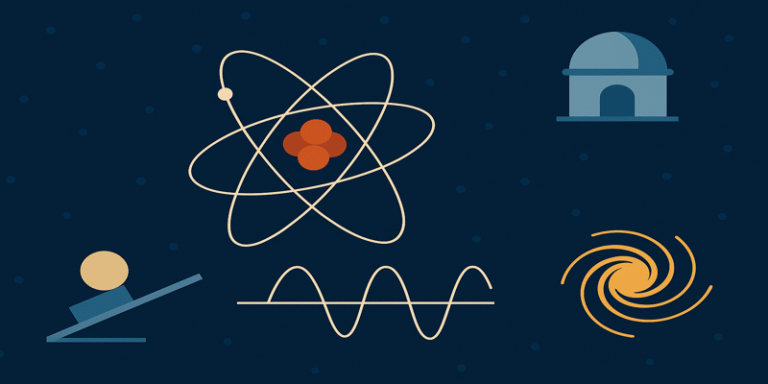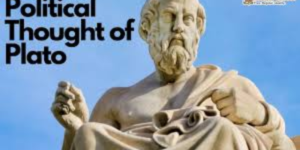Classical mechanics remains one of the most essential branches of physics, serving as the conceptual backbone of our understanding of motion, forces, and energy in macroscopic systems. Despite the rise of quantum mechanics and relativity, classical mechanics remains crucial in both education and practice, offering intuitive yet precise models that continue to underpin much of modern science and engineering.
This article offers an accessible but well-researched overview of the key ideas, developments, applications, and enduring relevance of classical mechanics. Drawing from academic journals, textbooks, and scholarly websites, it follows the Harvard referencing style, while highlighting critical concepts in bold for clarity.
Historical Roots: Newton’s Revolutionary Framework
Classical mechanics was fundamentally transformed by Isaac Newton, whose 1687 work Philosophiæ Naturalis Principia Mathematica laid the groundwork for what would become known as Newtonian mechanics (Newton, 1999 [1687]). At the core of Newtonian mechanics are three laws of motion:
- The First Law (Law of Inertia): An object in motion remains in motion unless acted upon by a net external force.
- The Second Law: The net force acting on an object is equal to the mass of the object multiplied by its acceleration (F = ma).
- The Third Law: For every action, there is an equal and opposite reaction.
These laws form the foundation for much of classical physics and are still taught universally in physics curricula (Young & Freedman, 2019).
Key Modules Within Classical Mechanics
Classical mechanics is not a monolithic field; it is divided into several interconnected modules:
1.0 Kinematics
Kinematics is the study of motion without regard to its causes. It includes the analysis of displacement, velocity, and acceleration. The equations of uniformly accelerated motion — such as v=u+atv = u + atv=u+at and s=ut+½at2s = ut + ½at^2s=ut+½at2 — are core to physics education and engineering calculations (Serway & Jewett, 2018).
2.0 Dynamics
Dynamics builds upon kinematics by introducing the concept of force as the cause of motion. Newton’s second law dominates this field, allowing the prediction of how an object will move under a given force. This is critical in the design of vehicles, structures, and machines.
3.0 Statics
Statics deals with bodies at rest and the forces in equilibrium. It is widely applied in civil engineering, where structures like bridges, dams, and buildings must be designed to withstand various forces without moving (Beer et al., 2015).
4.0 Fluid Mechanics
Fluid mechanics extends classical principles to liquids and gases. It includes the analysis of pressure, buoyancy, flow rate, and viscosity. Classical mechanics underpins phenomena like Bernoulli’s principle and Pascal’s law, which are essential to hydraulics, aerodynamics, and weather prediction (Munson et al., 2013).
Analytical Tools and Mathematical Foundations
Classical mechanics relies heavily on mathematical techniques. Core tools include:
- Vector calculus (for force and motion in multiple dimensions)
- Differential equations (to model continuous change)
- Trigonometry and algebra (for resolving components and simplifying systems)
In more advanced contexts, the Lagrangian and Hamiltonian formulations of classical mechanics allow for generalised solutions and serve as stepping stones to quantum mechanics (Goldstein et al., 2002).
Applications of Classical Mechanics
Though developed centuries ago, classical mechanics continues to influence diverse modern fields:
1.0 Engineering and Infrastructure
The construction of bridges, skyscrapers, vehicles, and robots all relies on the principles of classical mechanics. Engineers use it to calculate load-bearing capacity, balance forces, and design for safety (Hibbeler, 2016).
2.0 Planetary Motion and Space Exploration
Even though relativity offers more precision, Kepler’s laws of planetary motion and Newton’s law of universal gravitation provide sufficiently accurate models for many astronomical calculations. These have been used to plot satellite orbits, predict eclipses, and launch space missions (Smart & Green, 2013).
3.0 Sports Science and Biomechanics
Analysing the trajectory of a football, the aerodynamics of a javelin, or the torque in a gymnast’s spin all rely on classical mechanics. Such applications help in athlete performance enhancement and injury prevention (McGinnis, 2020).
4.0 Robotics and Automation
Robots and industrial machines must be programmed to interact with the physical world. That requires precise models of motion, friction, and force — all domains where classical mechanics thrives (Spong et al., 2020).
Limitations and Boundaries
While classical mechanics is incredibly useful, it is not without limitations:
- At very small scales (atomic/subatomic), quantum mechanics replaces classical models.
- At very high speeds (approaching the speed of light), relativistic mechanics becomes necessary.
- In extremely strong gravitational fields, Newtonian gravity is insufficient, and general relativity must be used.
These limitations do not undermine classical mechanics; rather, they define its range of applicability. For most macroscopic systems and everyday phenomena, classical physics remains entirely adequate and elegant.
Teaching and Learning Classical Mechanics
Classical mechanics forms the entry point into physics for most students, providing a mix of conceptual clarity and mathematical rigour. Textbooks such as University Physics with Modern Physics (Young & Freedman, 2019) and Physics for Scientists and Engineers (Serway & Jewett, 2018) are staples in undergraduate education.
Online platforms like Khan Academy and MIT OpenCourseWare also offer extensive video tutorials and problem sets, bringing classical mechanics to learners around the world (MIT OCW, 2023).
Modern Research and Developments
Despite its age, classical mechanics still sees research and innovation. Recent work in chaos theory, for example, explores how deterministic systems can exhibit unpredictable behaviour — such as weather systems or double pendulums (Strogatz, 2018).
In engineering, computational mechanics uses simulation and numerical methods (e.g. finite element analysis) to solve complex structural problems that are analytically intractable but governed by classical laws.
Classical mechanics remains a bedrock of physical science and engineering. Its principles, though formulated over three centuries ago, continue to govern how we understand, design, and manipulate the macroscopic world. Whether launching a satellite, constructing a skyscraper, or modelling a hurricane, the relevance of Newtonian mechanics is undiminished.
Far from being obsolete, classical mechanics offers both a practical toolkit and a philosophical lens — reminding us that even the simplest equations can unlock the mysteries of the cosmos.
References
Beer, F.P., Johnston, E.R., Mazurek, D.F., & Eisenberg, E.R. (2015) Vector Mechanics for Engineers: Statics and Dynamics. 11th ed. New York: McGraw-Hill Education.
Goldstein, H., Poole, C.P., & Safko, J.L. (2002) Classical Mechanics. 3rd ed. San Francisco: Addison-Wesley.
Hibbeler, R.C. (2016) Engineering Mechanics: Statics & Dynamics. 14th ed. Harlow: Pearson.
McGinnis, P.M. (2020) Biomechanics of Sport and Exercise. 3rd ed. Champaign: Human Kinetics.
MIT OpenCourseWare. (2023) Classical Mechanics. Available at: https://ocw.mit.edu (Accessed: 7 August 2025).
Munson, B.R., Young, D.F., Okiishi, T.H., & Huebsch, W.W. (2013) Fundamentals of Fluid Mechanics. 7th ed. Hoboken: Wiley.
Newton, I. (1999 [1687]) The Principia: Mathematical Principles of Natural Philosophy. Translated by I.B. Cohen & A. Whitman. Berkeley: University of California Press.
Serway, R.A. & Jewett, J.W. (2018) Physics for Scientists and Engineers with Modern Physics. 10th ed. Boston: Cengage Learning.
Smart, W.M. & Green, R.M. (2013) Textbook on Spherical Astronomy. 6th ed. Cambridge: Cambridge University Press.
Spong, M.W., Hutchinson, S., & Vidyasagar, M. (2020) Robot Modeling and Control. 2nd ed. Hoboken: Wiley.
Strogatz, S.H. (2018) Nonlinear Dynamics and Chaos: With Applications to Physics, Biology, Chemistry, and Engineering. 2nd ed. Boca Raton: CRC Press.
Young, H.D. & Freedman, R.A. (2019) University Physics with Modern Physics. 15th ed. Harlow: Pearson.









